THE ODEON ISLEWORTH
DIDN’T THIS BUILDING USED TO BE A CINEMA?
PART TWO: THE ROAD TO HOUNSLOW – STAND AND DELIVER!
The 81 bus route travels between Slough Station via Langley, Colnbrook and London Airport and terminates at Hounslow Bus Station. Colnbrook was a 17th Century village with many hills and bridges over the winding River Colne. As the bus left the village confines and came to the western entrance of London Airport at Harmondsworth, it passed by the Head Office of Penguin Books. Penguin Books was headquarters here from 1937 until 1990s when it merged with Viking Press and was moved to London to form the Penguin Group.
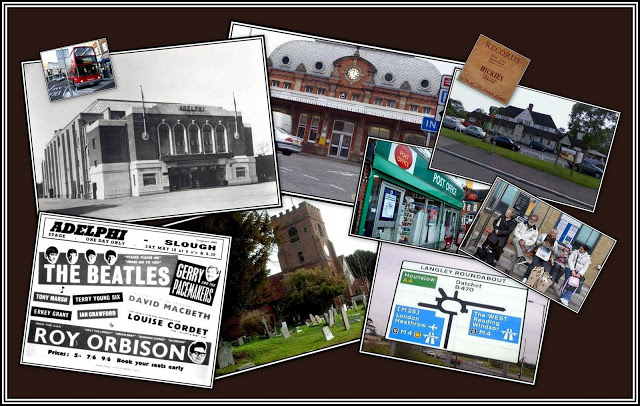 Scenes of Slough
Scenes of Slough
Slough, once decried by John Betjeman in a ten-stanza poem
and later as the setting for the television programme, The Office
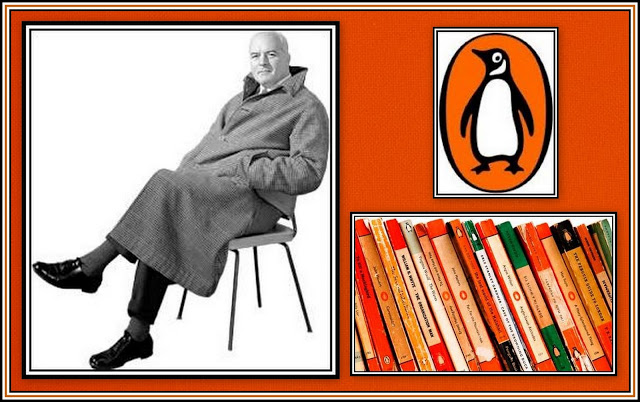 Penguin Books founded in 1935 by Allen Lane (1902-1970)
Penguin Books founded in 1935 by Allen Lane (1902-1970)
Hounslow was once, after London, the most important coaching centre in England. Today, it is a London Borough with a centre and the usual shops, but part of the old Heath still remains and is one of London’s largest nature reserves. The Heath was once part of the extensive Forest of Middlesex, which between the 17th and 19th Centuries covered over 25 square miles. London Airport was built on an area of the forest, as was much of the surrounding urban area.
Hounslow Heath was used for training purposes by both sides during the Civil War, which was fought between 1642 and 1651. I have to admit that I share the view along with many historians that these series of battles should be collectively referred to as the English Revolution since this technically was what it was and also can serve as a reminder to both the Americans and the French that ours was the first. The War was between Parliamentarians or Roundheads and Royalists or Cavaliers and consisted of three wars: the first two were against Charles I (1642-1646 and 1648-1649) and the third, against Charles II (1649-1651). The wars ended on 3rd September, 1651 when the Roundheads proved victorious at the Battle of Worcester. The wars resulted in the beheading of Charles I at Whitehall on 30th January 1649, the exile of his son, Charles II and the abolishment of the monarchy and the establishment of the Commonwealth of England (1649-1653) and then the Protectorate (1653-1659) under the leadership of Oliver Cromwell. What the wars and establishment of the new rule actually meant in terms of the constitution was that the monarchy could no longer govern without Parliament’s consent, which marked the first time in modern history that such a precedent was set.
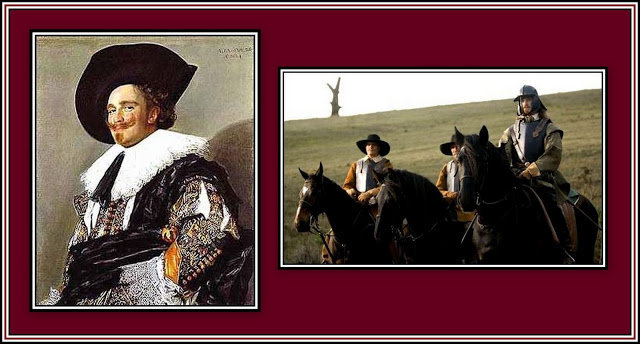 Cavalier & Roundheads – Left: The Laughing Cavalier by Franz Halls
Cavalier & Roundheads – Left: The Laughing Cavalier by Franz Halls
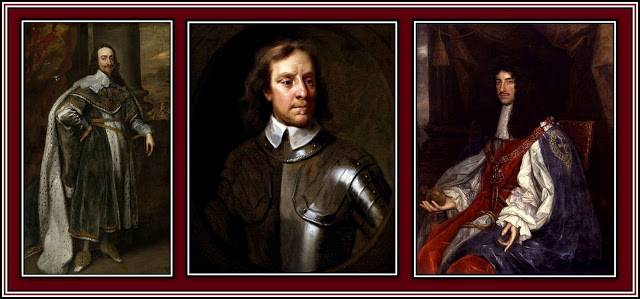 Left: Charles I; Middle: Oliver Cromwell; Right: Charles II (known as The Merrie Monarch)
Left: Charles I; Middle: Oliver Cromwell; Right: Charles II (known as The Merrie Monarch)
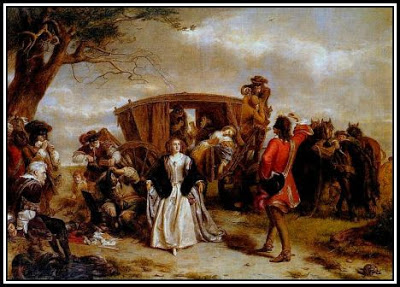 A romantic view of the Highwayman, Claude Duval
A romantic view of the Highwayman, Claude Duval
In addition to its use as a training site, Hounslow Heath has a colourful past. For over two hundred years, the Heath was the most dangerous place in England. Since both the Bath and Exeter Roads crossed it and were extensively used by the wealthy traveling to Windsor and the West Country, the Heath became the haunt of Highwaymen, as it could provide ample cover for such Gentlemen of the road. The first such brigands were Royalists officers who took to the open road when they were labeled as outlaws with the founding of the Commonwealth. Once a coach came to a halt at the request of a Highwayman, occupants were told to Stand and Deliver, which required them to hand over their valuables.
A Highwayman’s life was short and few lived beyond their twenties either being captured or killed during the act of robbery or else betrayed for the bounty offered by the authorities and hanged in public as places such as Tyburn (close to where Marble Arch now stands). Once dead, their bodies were often returned to the site of their crimes where they were left to hang and rot and act as a deterrent to others. Such Gibbets, as these gruesome remains were called, were once so plentiful on Hounslow Heath that they became landmarks and marked on the maps of the 18th Century.
Many Highwaymen gained popular support with the poor since their victims were most often the rich. Although many were pure villains, some resembled Robin Hood and gave their ill gotten gains to the poor and never stole from women and children. Their popularity was such at one time that it was seen as an honour to be held-up and robbed by a gentleman-robber.
Highwaymen entered the popular culture of the 18th Century when poems and songs were written about them and their exploits. In 1728, John Gay wrote The Beggar’s Opera, which was produced on the London stage and ran for 62 performances, a record at that time. The Opera satirised Italian Opera and has a highwayman, Macheath, as its hero. Some critics including Henry Fielding author of Tom Jones became disturbed at the romanticism associated with highwaymen and asked that the production be withdrawn.
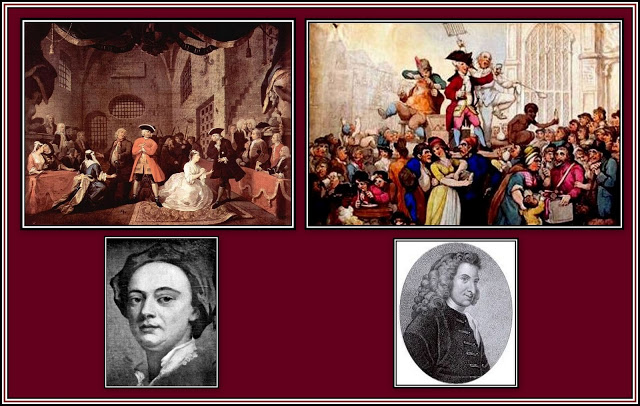 Top Left: Hogath’s Highwayman based on John Gay’s The Beggar’s Opera;
Top Left: Hogath’s Highwayman based on John Gay’s The Beggar’s Opera;
Top Right: Illustration of a scene from The Beggar’s Opera;
Bottom Left: John Gay; Bottom Right: Henry Fielding
The Beggar’s Opera was revived over the years and was made into a film in 1953 with Laurence Olivier as Macheath and a cast including Dorothy Tutin, Hugh Griffith, Stanley Holloway and, making his film debut, Kenneth Williams.
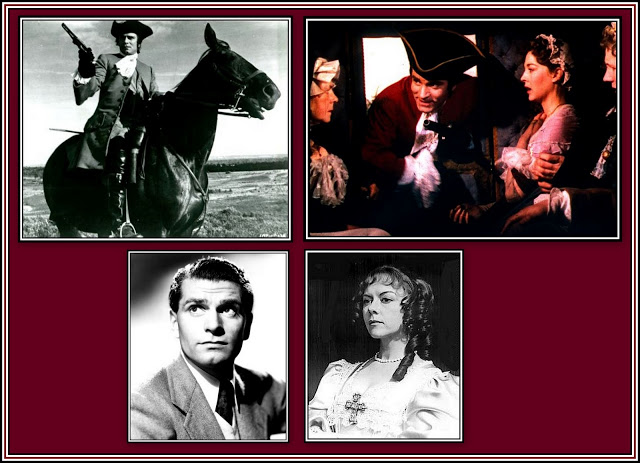 Scenes from the film of The Beggar’s Opera with Laurence Olivier as Macheath
Scenes from the film of The Beggar’s Opera with Laurence Olivier as Macheath
and Dorothy Tutin as Polly Peachum and directed by Peter Brook
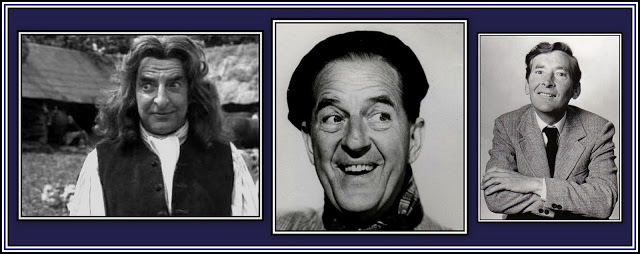 The Supporting Cast of the Film included:
The Supporting Cast of the Film included:
Left: Hugh Griffin; Centre: Stanley Holloway; and Right: Kenneth Williams
Bertolt Brecht and Kurt Weill wrote a new musical adaptation of the Opera, Die Dreigroschenoper (The Threepenny Opera) in 1928 setting it in the 1800’s and introducing a socialist leaning that caused grief to Hitler and his henchmen. Most of the music of this production was new and introduced audiences to both the actress Lotte Lenya and to the song, Mack the Knife (original title is Die Moritat von Mackie Messer) which has since been given both a jazz and a big-band treatment by Louis Armstrong, Ella Fitzgerald and Bobby Darin.
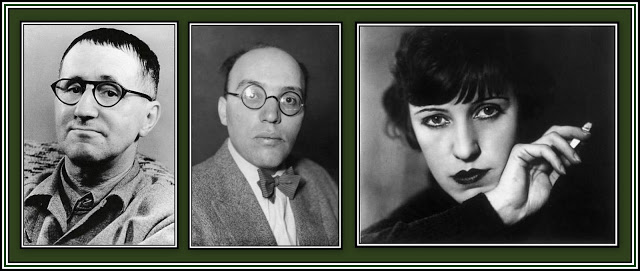 Left: Bertolt Brecht; Centre: Kurt Weill; Right: Lotte Lenya
Left: Bertolt Brecht; Centre: Kurt Weill; Right: Lotte Lenya
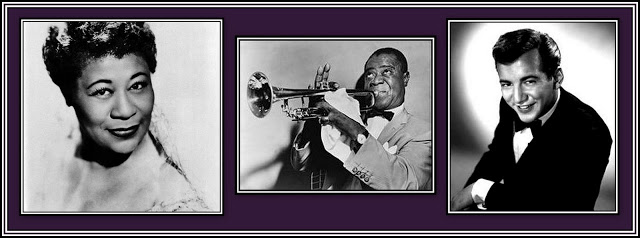 Left: Ella Fitzgerald; Centre: Louis Armstrong; Right: Bobby Darin
Left: Ella Fitzgerald; Centre: Louis Armstrong; Right: Bobby Darin
Of all the highwaymen of the 17th and 18th Centuries, Claude Duval and Dick Turpin are perhaps the best known. Claude Duval was French and considered to be gallant and is said to have danced with an especially beautiful victim on the Hounslow Heath and allowed her husband to go when he paid him £100. Duval was eventually brought to trail and hanged in 1670 at Tyburn. His body was displayed at a tavern and later removed and buried at St. Paul’s Church, Covent Garden and interned under the central aisle where there is an inscription. But it is Dick Turpin that is most remembered today.
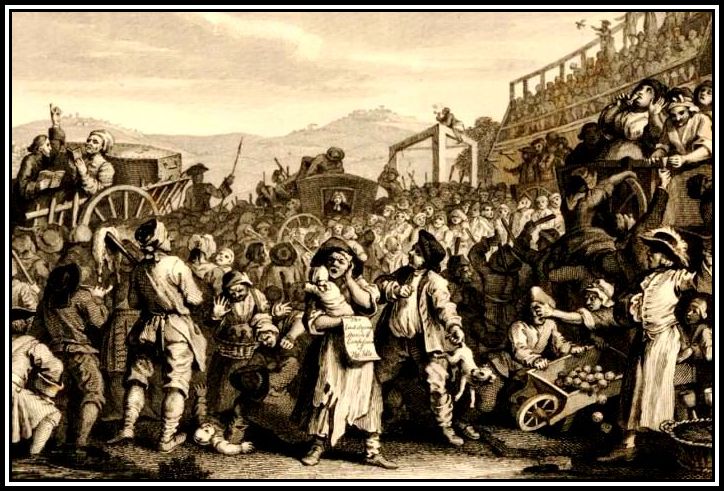 Tyburn
Tyburn
Left: William Hogath’s The Execution of the Idle ‘Prentice
Click here to watch a short video of the history of Tyburn Tree
Dick Turpin is believed to have been trained as a butcher in Whitechapel, but turned poacher-burglar-horse thief and murderer. He is best remembered for a supposed 200 mile overnight ride from London to York with his horse, Black Bess, which was made famous by William Harrison Ainsworth in a novel written about one hundred years after his death. Apparently Richard Dick Turpin became a member of a gang, known as The Essex Gang, who began their life of crime as deer poachers, but who eventually stepped-up their escapades to include burglary as well as some GBH! Eventually the gang members were caught, but Dick Turpin remained free and took up highway robbery and soon became notorious for his activities around London.
On 4th May, 1737, it is said that he committed murder and the high price of £200 was put on his head. During an altercation in the East Riding of Yorkshire, he apparently shot someone’s cockerel and then threatened to shoot another who tried to intervene. This led to his being bound over for refusal to pay a fine imposed and he was committed to the House of Correction at Beverley. Once it became clear that he was also wanted for an assortment of other crimes, the authorities had him transferred to York Assizes where he could answer them. At York, he was tried for horse theft, an act punishable by death since 1545. He was found guilty and sentenced to death and was taken by cart on 7th April, 1739 to Knavesmire, the equivalent of Tyburn in York, where he was hanged. He was buried in the churchyard of St. George’s Fishgate, but bodysnatchers stole his body, however the public captured them and recovered Dick Turpin’s body and reburied it.
The life and exploits of Dick Turpin quickly passed into legend, but it was the ride between London and York that the 19th Century author William Harrison Ainsworth included in his novel, Rookwood that elevated him and his horse into romantic mythology. In the book, Turpin, referred to as Palmer, escapes on his horse, Black Bess, and together they attempt flee. Black Bess gives her all and in so doing dies from exhaustion and stress. The death of Black Bess caught the imagination of readers and the ride quickly became forever incorporated into the legend of Dick Turpin.
——oooOOOooo——
As a footnote to this story: just a few hundred yards from where I lived in Langley, there was a huge chestnut tree. This was a beautiful tree with a remarkable shape to it. A short way from the tree was an old country house that had been used during World War II by a government organization. When I knew the house, it was rather the worse for wear and had been converted into a number of apartments. I learned that the house and tree had once been part of an estate, which had been sold as parcels of land over the years, first for farming, as a number of small holdings, and then for building new homes.
According to the lady that told me about the tree and the house, a highwayman once sheltered beneath the branches of the tree after holding up a coach on the London Road, which was not far off. She also said that he used to wait there for the daughter of the Squire to pass by as she ventured out for a walk in the grounds. She said that it was believed that the young woman and the highwayman were very much in love. Whether their relationship went further and the two rode off together into the night, she did not know and sadly I never discovered. I like to think that they did, however the possibility also exists that the highwayman was shot dead during a robbery or captured and perhaps hanged for his crimes.
Sometime after hearing this story, I discovered the Brazilian song, O Cangaciero, which was translated as The Bandit of Brazil. I remember that the English lyrics had a line that says that a young girl escapes her father and rides away across the mountains with the Bandit. I have always associated this song with the story of the Highwayman and the Squire’s daughter.
——oooOOOooo——
Life is a jest, and all things show it,
I thought so once, and now I know it.
——oooOOOooo——
Click here to go to PART THREE: THE ROLLS-ROYCE OF TROLLEYBUSES
——oooOOOooo——
Click here to go back to
PART ONE: THE TROLLEYBUS & THE DEFINITION OF AN ICON
——oooOOOooo——
Click here to return to THE ODEON ISLEWORTH Home Page
——oooOOOooo——
Click here to return to the TABLE OF CONTENTS
——oooOOOooo——
2 thoughts on “PART TWO: THE ROAD TO HOUNSLOW”
Leave a Reply

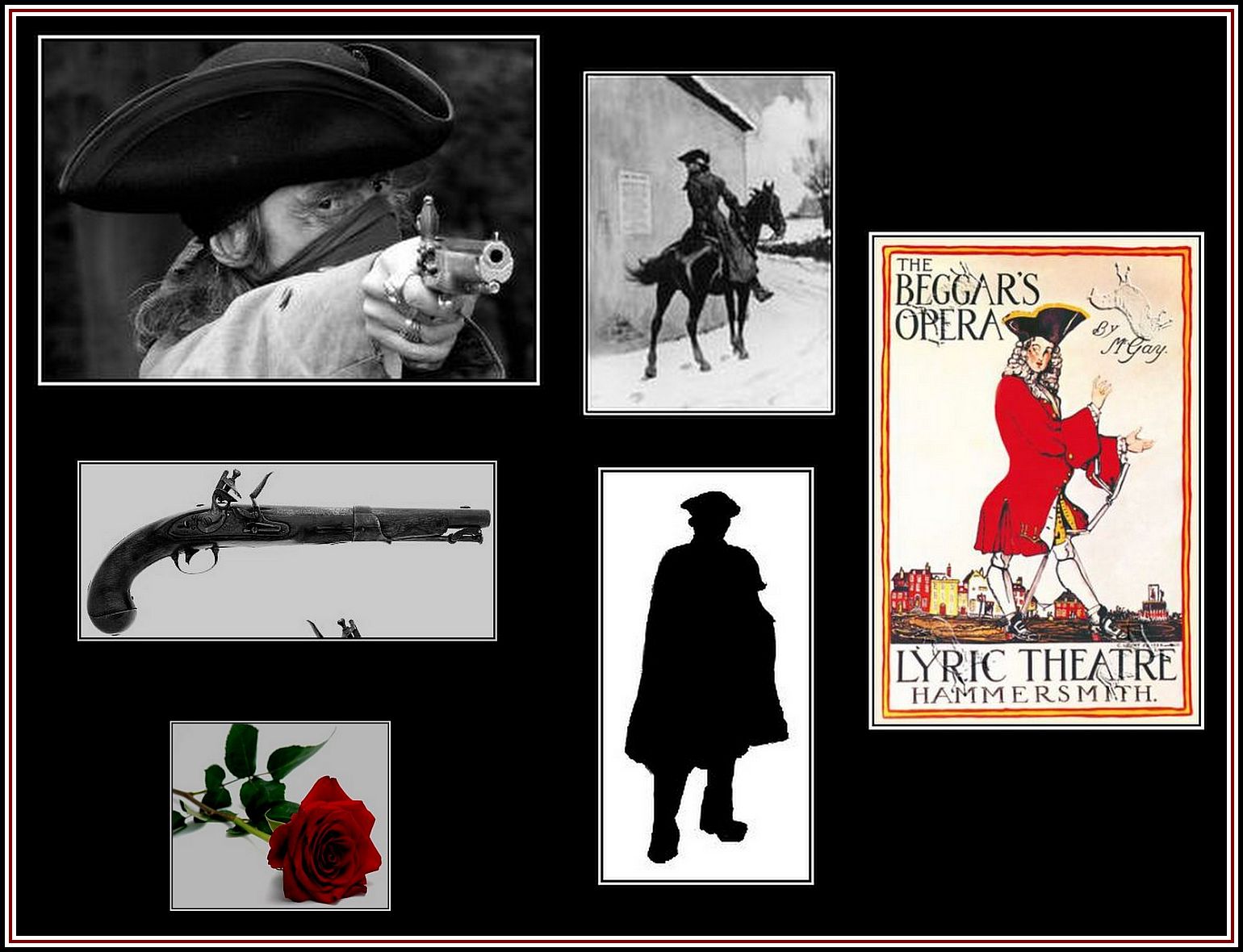
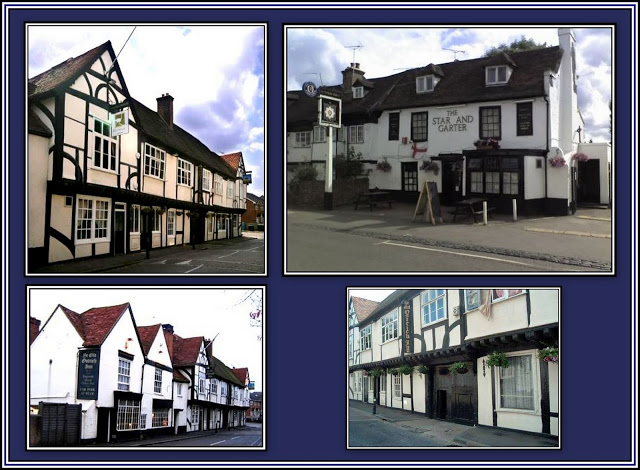

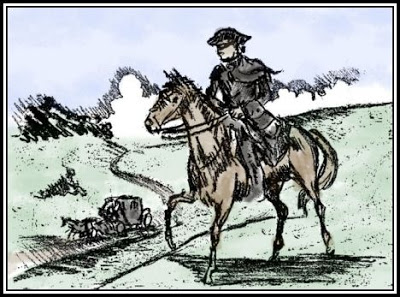
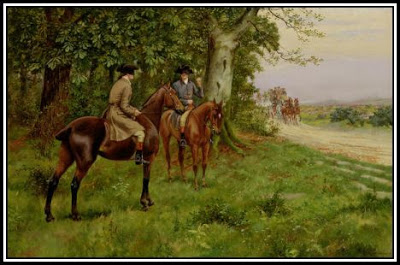
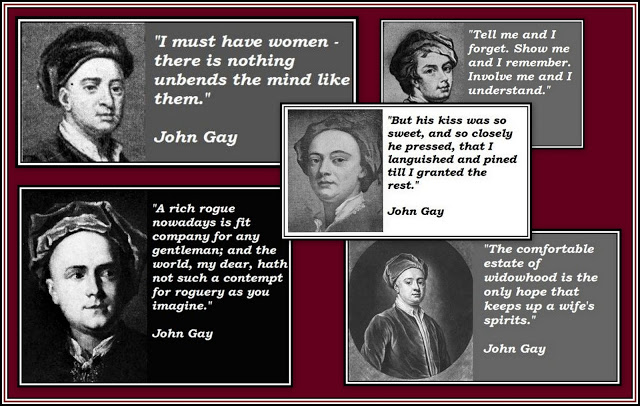
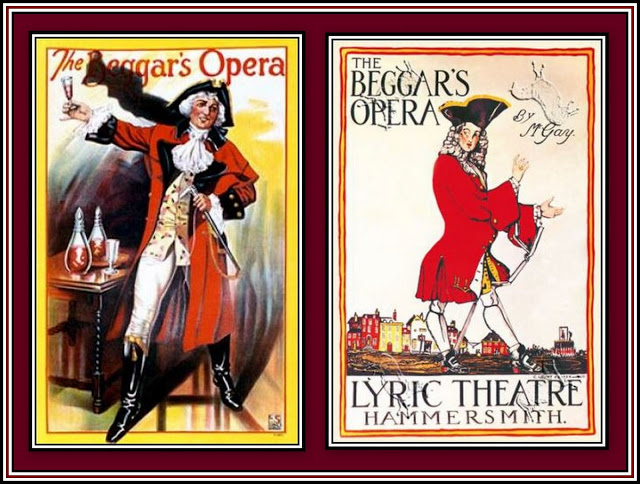
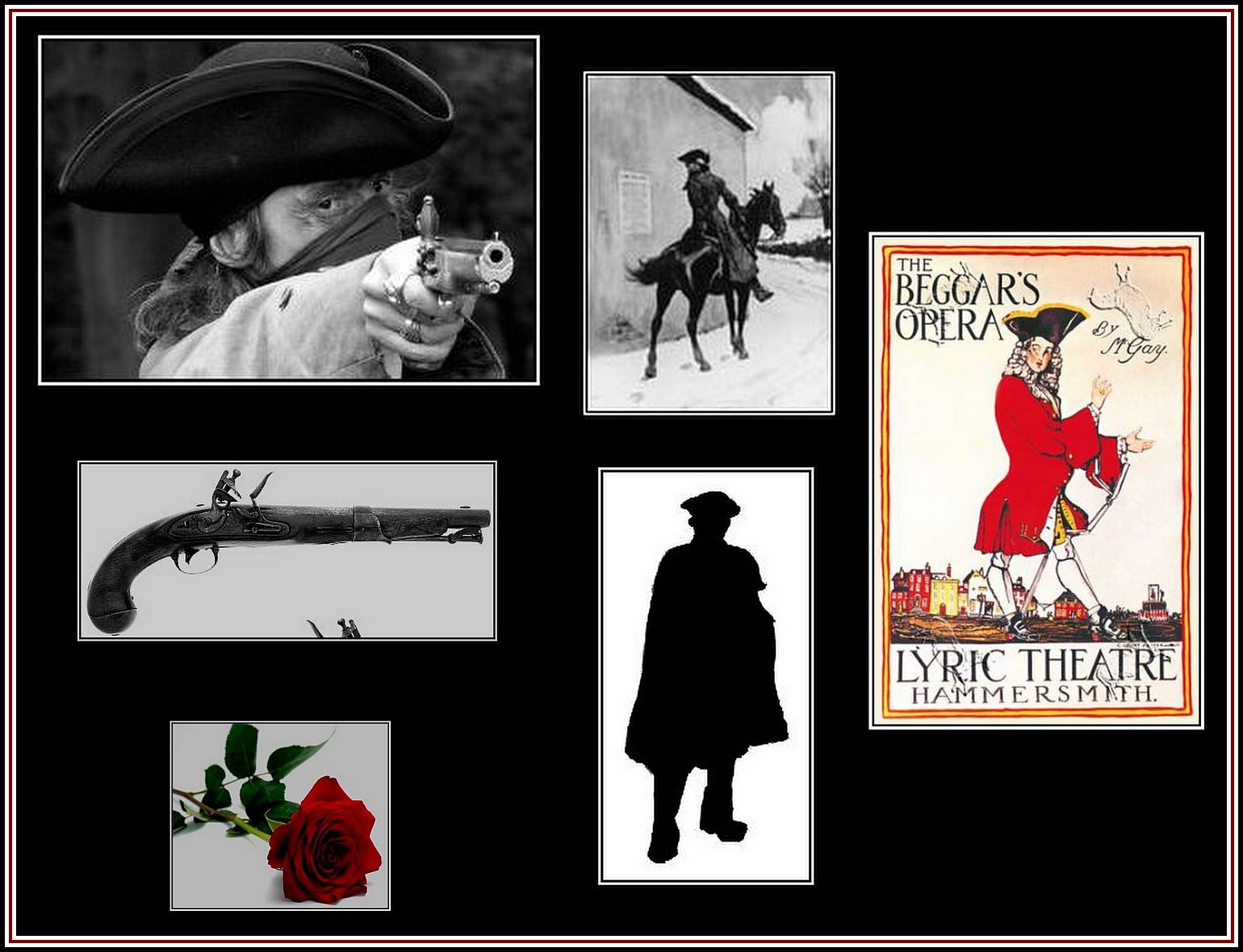
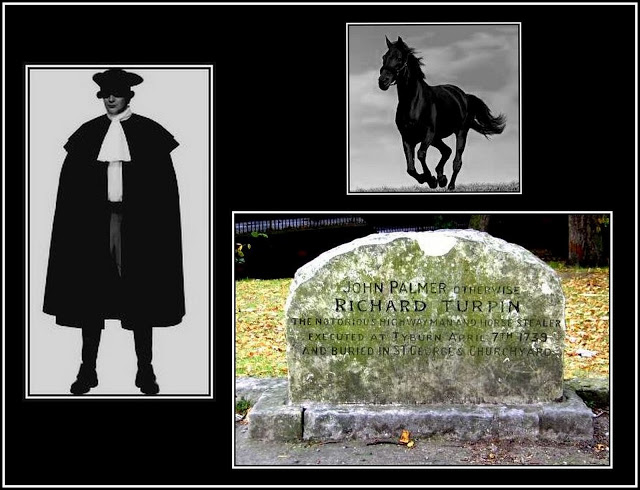

My father was a driver on the 657 route for a number of years. I remember the children’s Christmas parties in the staff canteen. In school holidays I would occasionally go on a shift, being allowed to change the points at Busch Corner where the 657 & 667 routes met. Even recall at Brentford “helping” with the pole to change the “sticks” for the turn-around. My father left the buses when the 657 was withdrawn. As the 657 didn’t run at Easter or Christmas he’d often take the 667 route out of Fulwell. Isleworth depot was one way so there was a travelling turntable at the far end of the depot.
Thank you very much for visiting my website and for sending a comment. Terrific memories to be able to ‘change the points’ and also help change ‘the sticks’. Regards. Charles